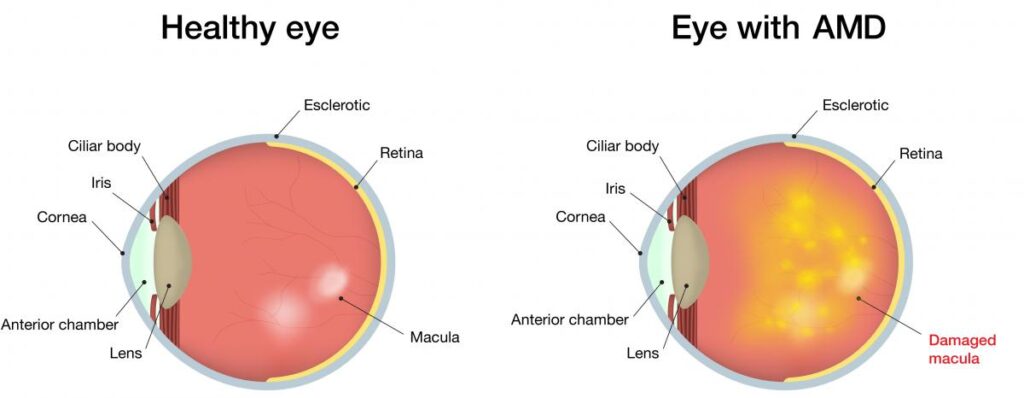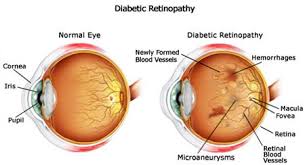Eye Diseases
Understanding Common Eye Diseases: Causes, Symptoms, and Treatments
Our eyes are precious organs that allow us to perceive the world around us. However, they are susceptible to various diseases that can impair vision and quality of life. Understanding these conditions is crucial for early detection and effective treatment. Here are some common eye diseases:
1.Cataracts

Cataracts are one of the most common age-related eye conditions. They occur when the lens of the eye becomes cloudy, leading to blurred vision, sensitivity to light, and difficulty seeing at night. The primary cause of cataracts is aging, but they can also develop due to factors like diabetes, smoking, and prolonged exposure to sunlight.
Symptoms
- Blurred or cloudy vision
- Difficulty seeing at night
- Sensitivity to light
- Seeing halos around lights
Treatment
Surgery is the most effective treatment for cataracts. During the procedure, the cloudy lens is removed and replaced with an artificial lens, restoring clear vision.
2.Glaucoma

Glaucoma is a group of eye conditions that damage the optic nerve, usually due to increased pressure within the eye. It is often referred to as the “silent thief of sight” because it can progress slowly and without symptoms until significant vision loss occurs.
Symptoms of Glaucoma
- Gradual loss of peripheral vision
- Blurred vision
- Eye pain
- Halos around lights
Treatment of Glaucoma
Treatment for glaucoma aims to lower intraocular pressure to prevent further damage to the optic nerve. This may include eye drops, oral medications, laser therapy, or surgery.
3.Age-related Macular Degeneration (AMD)

AMD is a leading cause of vision loss in people over 50. It affects the macula, the central part of the retina responsible for sharp, central vision. There are two types of AMD: dry AMD, which progresses slowly, and wet AMD, which can cause rapid vision loss.
Symptoms of (AMD)
- Blurred or distorted central vision
- Difficulty reading or recognizing faces
- Dark spots in the central vision
Treatment of (AMD)
While there is no cure for AMD, certain treatments such as injections, laser therapy, and medications can help slow its progression, especially in the case of wet AMD.
4.Diabetic Retinopathy

Diabetic retinopathy is a complication of diabetes that affects the blood vessels in the retina. It is a leading cause of blindness among adults with diabetes. High blood sugar levels can damage the blood vessels, leading to leakage, swelling, and eventually vision loss.
Symptoms of Diabetic Retinopathy
- Blurred or fluctuating vision
- Floaters or spots in the field of vision
- Difficulty seeing at night
Treatment of Diabetic Retinopathy
Managing blood sugar levels is crucial in preventing and slowing the progression of diabetic retinopathy. Treatment may also involve laser therapy, injections, or surgery in advanced cases.
Conjunctivitis (Pink Eye)

Conjunctivitis is an inflammation or infection of the conjunctiva, the transparent membrane that covers the white part of the eye and lines the eyelids. It can be caused by viruses, bacteria, allergens, or irritants.
Symptoms of Conjunctivitis (Pink Eye)
- Redness in the white part of the eye
- Itchiness or burning sensation
- Watery or mucous discharge
- Swollen eyelids
Treatment of Conjunctivitis (Pink Eye)
Treatment for conjunctivitis depends on the cause. It may include antiviral or antibiotic eye drops, antihistamines, or artificial tears.
Prevention and Conclusion
While some eye diseases are unavoidable, many can be prevented or their progression slowed through healthy lifestyle choices and regular eye exams. Protecting your eyes from harmful UV rays, eating a balanced diet rich in fruits and vegetables, avoiding smoking, and managing underlying health conditions like diabetes can all contribute to maintaining good eye health.
Regular comprehensive eye exams are essential for early detection and treatment of eye diseases. If you experience any changes in your vision or eye discomfort, don’t hesitate to consult an eye care professional. Remember, early intervention is key to preserving your vision and enjoying a lifetime of healthy eyesight.

